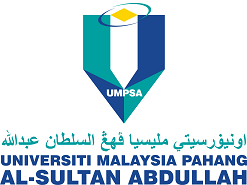Factors influencing hydrothermal pretreatment of banana peel for high recovery of pectin oligosaccharides (POS)
DOI:
https://doi.org/10.15282/jceib.v10i2.10817Keywords:
Hydrothermal pretreatment, Pectin oligosaccharides, Banana peelAbstract
Utilizing banana peels creates opportunities for technological advancement in the direction of production strategies for food ingredients. Banana peel is an inexpensive by-product that can be processed into oligosaccharides with significant added value that has been reported to benefit food, animal feed and human health. Recently, pectin oligosaccharides (POS) have been the main research subject on banana peel polysaccharides. Biomass conversion from banana peel to pectin oligosaccharides has yet to be thoroughly studied. In order to fulfill the aforementioned gap, the present research study was designed to identify the best hydrothermal pretreatment conditions (temperature, pH and substrate ratio) for high recovery of POS. Prior to the pretreatment, the banana peel hydrolysate was characterized to measure the C, N, and H elements as well as the cell wall’s morphology. Next, the hydrothermal pretreatment method started by varying the temperature with three different values 105°C, 120°C, and 135°C by using an autoclave followed by pH varied at (3, 4, and 5), lastly different substrate ratio (1:5, 1:10, and 1:15 of solid: liquid ratio, w/v). After that, DNS method was chosen to determine the amount of reducing sugar i.e. POS in each sample. The study's findings suggest that the highest amount of reducing sugar POS was achieved by using UV/Vis spectroscopy at an absorbance of 540 nm were at a temperature of 135°C, pH of 5, and a substrate ratio of 1:15 (w/v). The study successfully investigated the hydrothermal pretreatment conditions of lignocellulosic biomass, specifically for banana peel to recover high POS. At 135°C, pH of 5, and a substrate ratio of 1:15 (w/v), the highest POS measured was 44.60 mg/mL.
Downloads
Published
Issue
Section
License
Copyright (c) 2024 The Author(s)

This work is licensed under a Creative Commons Attribution-NonCommercial 4.0 International License.



